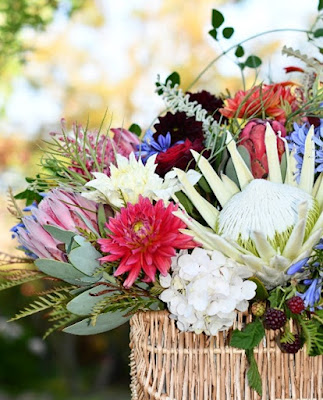50 Wedding Centerpiece Ideas We Love
As you're planning your wedding, you'll likely need to put some thought into how you'll decorate your reception. While most couples opt for floral arrangements—which they place in the center of their tables—the options extend far beyond simple bundles of one kind of bloom. With so many flower varieties out there, as well a whole spectrum of petal shades, choosing blossoms for your centerpieces can be overwhelming. Plus, not all brides and grooms want to use flowers at all—some choose to work with other elements, like candles. How can you decide on the right decorations for your celebration’s color scheme and theme?
Read more here.
_______________________________________________________
Fynbos: why fire is important for its survival
The ‘Cape Floral Kingdom’ is home to thousands of plants unique to South Africa, and while fynbos thrives after fire, ecologists feel there are vital lessons to be learnt from the flames.
South Africa’s Cape Floral Kingdom is the smallest but the most diverse: “There are approximately 9600 plant species in the Cape Floral Kingdom, and about 70% of them are found nowhere else in the world,” says van Wilgen. Most of this is fynbos, the hardy, shrubby plants with fine, small leaves, bulb plants and reeds that can be found from along the Cape’s coasts to mountain tops.
Ecologist Dr Jasper Slingsby explains that “fynbos and the Cape Floristic Region are the richest temperate flora in the world, making up roughly 3% of all known vascular plant species on the planet”.
Read more here.
_______________________________________________________
African Protea
Proteas were named after the Greek god Proteus, son of Poseidon, who had the ability to transform himself into many different shapes—and proteas do come in an astounding variety of shapes, sizes, hues, and textures. These plants are known for their unusual and beautiful flowers, which seem rather mythological themselves, like blooms from an alien landscape—some can reach 12 inches (30.5 centimeters) across. Proteas are considered to be among the oldest of flowering plants, and from the king protea Protea cynaroides to the tall silver tree Leucadendron argenteum to the nodding pincushion Leucospermum cordifolium, they have the allure of another time.
Read more here.
________________________________________________________
The Outside Story: How flowers get their color
To quote the French dramatist Jean Giradoux, “The flower is the poetry of reproduction. It is an example of the eternal seductiveness of life.” Flowering plants fill our summer fields and gardens, bring bright spots of color to our woods, and since their arrival on the scene some 130 million years ago have evolved along with animal life to become an essential part of the food web.
Read more here.
























